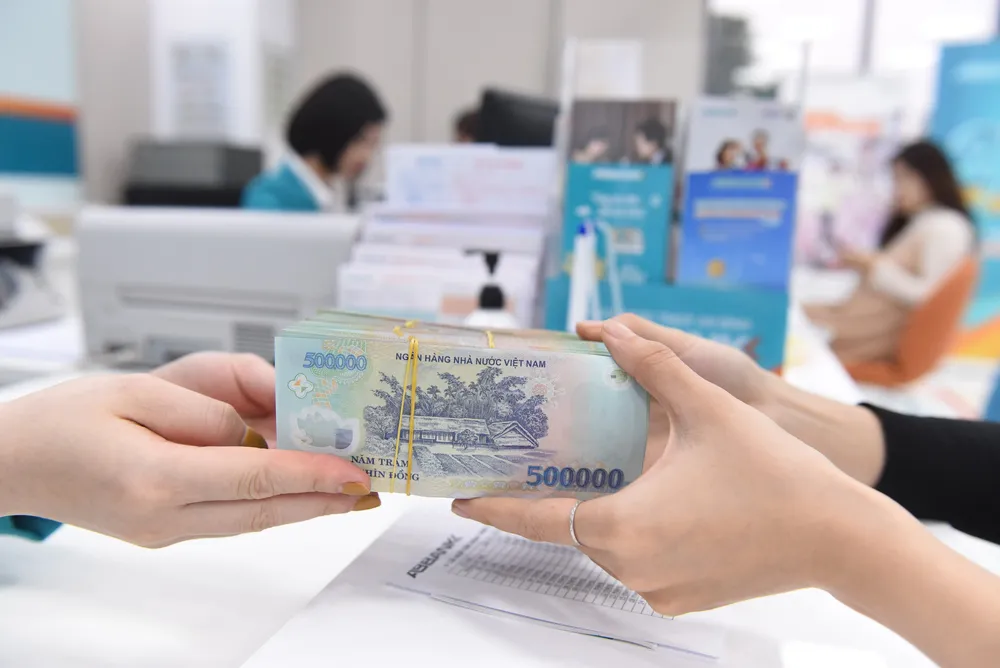
However, despite this, banks appear undeterred, persisting in their efforts to drive profits through credit operations. In this context, concerns emerge regarding the authenticity and sustainability of these projected profits—are they truly reflective of genuine economic activity, or are they inflated?
Boosting Profits through Credit Expansion
In the first quarter of 2024, several banks have seized the initiative by announcing robust business results, marked by significant profits. A key driver behind these impressive earnings is attributed to robust credit growth observed from the onset of the year. Looking ahead, banks anticipate a further uptick in credit demand, aligning with the pace of economic recovery. Notably, projections suggest that credit linked to the real estate sector may witness a surge in 2024, fueled by the anticipated return of home loan interest rates to preferential levels.
In 2024, Vietnamese banks are aiming for significant expansions in their outstanding customer loans, reflecting a collective drive towards bolstering credit activities. OCB targets a 20% increase in market 1 outstanding debt, reaching VND 177,592 billion, subject to adjustments in accordance with the credit growth limit set by the State Bank. Meanwhile, NCB anticipates outstanding customer loans to surge to VND 64,344 billion, marking a noteworthy 16% increase compared to the end of 2023.
Additionally, several other banks have outlined their credit growth orientations for 2024. VPBank is poised for a 25% increase, while VIB targets a 20% expansion. MSB aims for an 18% growth, SeABank eyes a 16.1% increase, and Eximbank anticipates a 14.6% surge. VietABank, SaigonBank, Sacombank, and VietBank propose varying growth scenarios, ranging from 11% to 18%, reflecting diverse strategies to capture opportunities in the evolving market landscape.
In the pursuit of profitability, banks have long relied on credit as a primary revenue driver, particularly amid the challenges faced by other lucrative sectors like insurance. However, the banking industry is encountering numerous barriers to credit growth in the current year, set against a backdrop of broader economic challenges.
A recent report from the State Bank underscores the persistent obstacles facing credit expansion, including businesses contracting or halting operations amidst inflationary pressures and escalating material costs. Another group, grappling with soaring input expenses and elevated production costs, finds little incentive to seek loans. Additionally, shifts in importer inventory policies, compressing average sales cycles, have diminished the demand for credit to fulfill export orders.
The broader economic slowdown has also curtailed consumer spending, as individuals and households prioritize savings over borrowing. UOB Bank's Global Economic and Market Research Department attributes the subdued credit demand to multifaceted factors, suggesting that a return to normalcy may be protracted.
Despite these challenges, why do banks maintain optimism?
Balancing Optimism with Caution
Dr. Nguyễn Trí Hiếu, a banking expert, underscores the correlation between a bank's profit trajectory and its credit growth. With the State Bank of Vietnam aiming for a higher credit growth target of 14-15% this year, optimism pervades the industry, fueled by forecasts suggesting a more stable economic outlook in the latter half of 2024.
However, recent developments reveal a nuanced perspective. While banks remain hopeful for improvements in the credit market, they also exhibit a degree of caution. The persisting economic challenges underscore the need for prudence in credit lending practices. Ultimately, profit plans are crafted not only to instill confidence among shareholders but also to align with regulatory expectations set forth by the State Bank.
In recent years, the alignment between banks' profit plans and their actual performance has become increasingly tenuous. Despite setting ambitious targets, many banks have fallen short of expectations, with some even recording losses. This disconnect highlights a concerning trend where profit plans no longer reliably predict actual outcomes.
For instance, in 2023, TPBank's pre-tax profit plummeted by 29%, reaching approximately VND 5,590 billion, representing only 64% of the year's plan. Similarly, PGBank's pre-tax profit dipped by 30%, totaling VND 355 billion, and achieving only 67% of the set target. ABBank fared no better, experiencing a staggering 69.6% decline in pre-tax profit compared to 2022, underscoring the challenge of meeting established targets.
These instances underscore the need for banks to reassess their approach to goal-setting and performance management to ensure greater alignment between plans and outcomes.
The recent announcement of audited financial reports for 2023 has sent ripples through the market, with a notable revelation emerging: ten banks reported reduced profits compared to their initial reports. This group collectively experienced a decrease in profit levels by approximately VND 1,325 billion following the audit process.
One bank that stands out amidst this trend is OCB, which witnessed a significant variance in pre- and post-audit profits in its 2023 financial statement announcement. Notably, OCB's pre-tax profit underwent a substantial decline of VND 1,088 billion, resulting in a revised figure of VND 4,139 billion compared to the initial management report.
Dr. Nguyễn Trí Hiếu sheds light on the divergent approaches to evaluating bank performance in Vietnam compared to the US. In Vietnam, investors and shareholders tend to prioritize forecasts over achieved numbers, often viewing deviations as inconsequential to a bank's overall health. Conversely, in the US, such discrepancies are closely scrutinized, signaling potential issues within the institution.
Moreover, the flexibility of Vietnam's accounting entry system allows for easy adjustments, particularly in terms of profits and risk provisions. This dynamic enables banks to manipulate their financial results to some extent. For instance, banks may reduce provisions to inflate profits or increase provisions to suppress profits, highlighting the fluid nature of financial reporting in the Vietnamese banking sector.




















